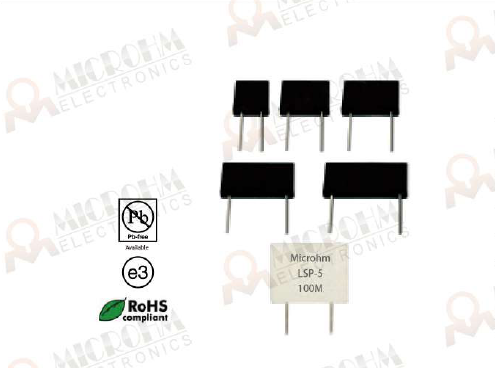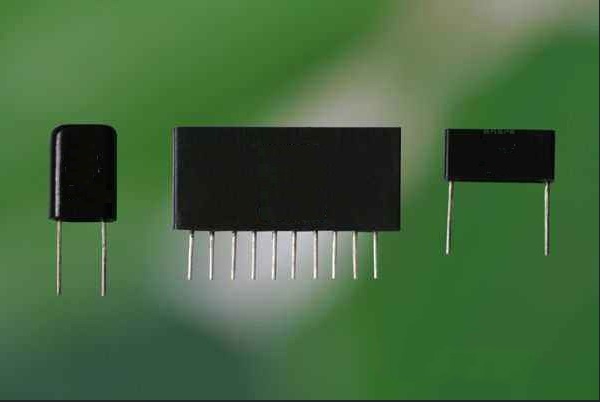Position:Home » Industry News
Resistor Networks in Critical Applications
Writer:Microhm Page View:Date:2019-10-18
From instrument amplifiers to precision analog circuits to geophones, resistor networks, such as Microhm Electronics' LSP series, are used in a variety of applications. Each has its own unique requirements, but none more stringent than the high-reliability applications found in medical and aerospace industries.
In ultrasound equipment, for example, circuits require tight resistor tolerances and excellent tracking. Plane flight controllers or calculators demand precision resistors, while also requiring that components meet tight size constraints. Long-life stability is important for resistor networks in these applications.

Resistor networks are best realized with thin-film resistor technology, which offers the flexibility to implement either standard or custom resistor circuits. For applications requiring high accuracy, ceramic materials are used for substrate material. Resistor networks usually contain from two to 20 resistors. Many circuit designers prefer to use more networks of fewer resistors each to simplify their board routing. Putting the resistors directly adjacent to the amplifiers simplifies board routing and shortens critical trace lengths.
In high-reliability applications, customers need stable resistive elements. In most cases, customers require a resistor component that — after the calibration routine — they can “set and forget.”

It is essential that once the resistor network is in place, the specified resistance values do not fluctuate. In medical and aerospace applications, a typical stability requirement is 10-ppm change annually. Absolute tolerances and tracking ratios are typically ±0.1% and ±0.05%, respectively. Microhm Electronics's LSP series is thin-film resistor networks with tolerance ±0.1% and ±0.05%.
In ultrasound equipment, for example, circuits require tight resistor tolerances and excellent tracking. Plane flight controllers or calculators demand precision resistors, while also requiring that components meet tight size constraints. Long-life stability is important for resistor networks in these applications.

Resistor networks are best realized with thin-film resistor technology, which offers the flexibility to implement either standard or custom resistor circuits. For applications requiring high accuracy, ceramic materials are used for substrate material. Resistor networks usually contain from two to 20 resistors. Many circuit designers prefer to use more networks of fewer resistors each to simplify their board routing. Putting the resistors directly adjacent to the amplifiers simplifies board routing and shortens critical trace lengths.
In high-reliability applications, customers need stable resistive elements. In most cases, customers require a resistor component that — after the calibration routine — they can “set and forget.”

It is essential that once the resistor network is in place, the specified resistance values do not fluctuate. In medical and aerospace applications, a typical stability requirement is 10-ppm change annually. Absolute tolerances and tracking ratios are typically ±0.1% and ±0.05%, respectively. Microhm Electronics's LSP series is thin-film resistor networks with tolerance ±0.1% and ±0.05%.
Keywords:
Latest News
- Resistor's role in measuring and correcting LED,,,
- Single through-hole resistors' characteristics ,,,
- Why shunt resistors for current sense applicati,,,
- Metal-film resistors with small size, high resi,,,
- 36W High-Current Shunt Resistors MMS8420,,,
- 1W Surface Mount Resistor MPR1206,,,
- An Overview of Microhm Electronics' Resistor Pr,,,
- More anti-sulfur resistors used in harsh envir,,,
- Resistance changes with temperature,,,
- 140W TO247 High Power Heatsinkable Resistor,,,
- MMS5930 is ideal for current sensing in industr,,,
- Shunt resistors selection for engineers' design,,,
- Considerations for choosing precision resistors,,,
- Ceramic Encased Cement Resistors NWH Series for,,,
- Resistors for Passive Balancing in Battery-Pow,,,
Hot Articles
- Microhm will take part in 10th Automotive World,,,
- Thanks for Visiting Microhm's Booth E5-5706 in ,,,
- Resistors in Short Supply: Blame Cars,,,
- New lunch: High Power Precision Shunt Resistor,,,,
- How to Test a Resistor,,,
- Innovative Technology, Future Electric: Electri,,,
- What is Precision Resistors?,,,
- SMD Resistors Sizes and Packages,,,
- The Construction and Features of Metal Film Res,,,
- What is a TO-220 Resisor?,,,
- Hot Selling Products: Precision Shunt Resistors,,,
- How to Calculate the Equivalent Resistance Valu,,,
- What is a Fixed Resistor?,,,
- Resistors in LED Circuits,,,
- Resistors Types and Materials Overview,,,
Resistance applications
- Urbanization Development Bringing the Transform,,,
- Miniature future for passive electronic compone,,,
- The Measurement Accuracy of Automotive Shunt is,,,
- Difference Between High Precision Resistors and,,,
- Shunt Resistor MMS8420 for High Current Stable ,,,
- Select the Right Resistor for Harmonic Filterin,,,
- Precision Resistors' Construction and TCR,,,
- Industrial Roberts Applied to Solar Photovoltai,,,
- Carbon Film Resistors' Features and Application,,,
- The Four Important Functions of Alloy Resistors,,,
- The Main Application for High Precision and Low,,,
- Why Zero-Ohm Resistors?,,,
- Surface Mount Resistor's Size and Package ,,,
- BMS for New Energy Vehicle,,,
- Heater Blower Motor Resistor in Air Conditioner,,,
